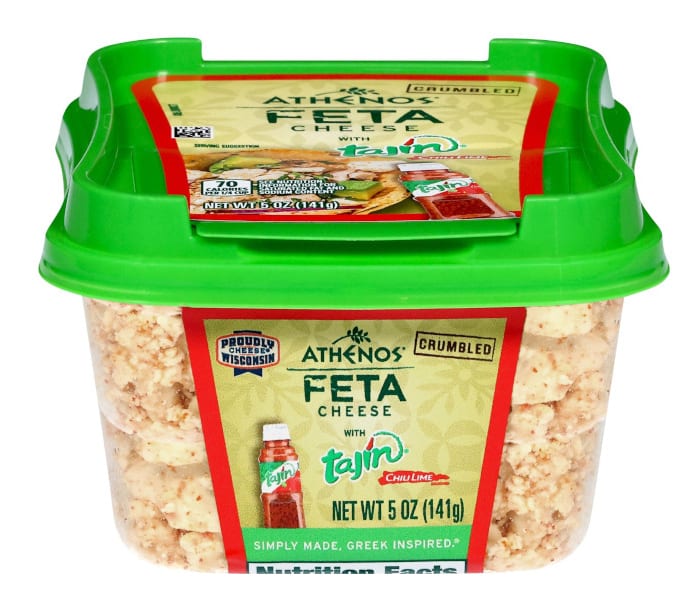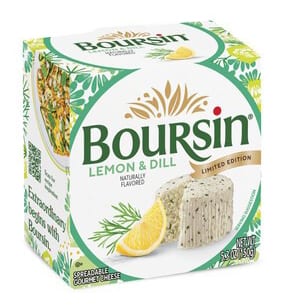
Cheese ingredients
A blockbuster ingredient
Photo courtesy of bhofack2 / iStock / Getty Images Plus
With adjectives like stretchy, cheesy and crumbly, cheese has several textures, while flavors range from salty or sharp to nutty or creamy. From mozzarella used as a pizza topping to ricotta cheese in a lasagna to melty cheddar on top of a chargrilled burger, the superlatives around cheese don’t quit.
Steve Funk, senior cheese technologist at Nelson-Jameson, Marshfield, Wis., notes that the Top 3 cheeses are Cheddar, and some of its American “cousins” like Monterey Jack, Colby, Queso Quesadilla, Parmesan and Mozzarella and its cousin Provolone.
“These can all be used in various blends for pizzas, burgers, salads and tacos,” Funk says, pointing out that blends remain a hot trend.
Phil a’Becket, senior consumer insights manager at FlavorSum, Kalamazoo, Mich., citing Innova Market Research, remarks that “Cheddar, Parmesan and Mozzarella are the Top 3 cheeses used as ingredients in North American food launches, with Monterey Jack, a recent ‘up-and-comer’ as a spicier option.”
Using its social listing platform, Tastewise, for insights about which cheese ingredients are generating interest among shoppers, FlavorSum reports Whipped feta, Swiss cheese and Asiago are trending among those seeking interesting textures and flavors.
“But American cheese, Jack and Provolone have more momentum as people look for versatile cheeses with excellent melting properties that are affordable,” a’Becket states. “We are watching Panela cheese, Fromage Blanc, Cheddar Jack, and Chihuahua cheese as emerging, buzzy styles to see if they become more mainstream. Each offers unique properties — from the firmness of Panela for grilling to the fresh creaminess of Fromage Blanc and the richness of Cheddar Jack and Chihuahua.”
Chicago-based market research firm SPINS LLC reports that the overall refrigerated cheese and plant-based cheese category generated dollar sales of $183.3 million, a decline of nearly 7% for the 52 weeks ending March 23. Unit-wise, the category declined 5.3% to nearly 35 million units.
In 14 different subsegments, including the Top 3 forms of shredded, single packaged sliced and block/ brick/chunk, most had declining year-over-year sales. In the case of the Top 3, dollars dipped 5.3%, 8.5% and 19%, respectively, with sales of $84 million, $48.6 million and $11.5 million.
Albeit from a much smaller base, log cheese, with 60% year-over-year (YoY) growth, had sales of $22.6 million, while unit sales climbed 59% to 1.6 million. Other winning segments were wedge, up 13.7% and sales of $6.2 million; crumbled, up 11.6% and sales of $5.3 million; grated, up 0.1% and sales of $4.7 million; and liquid, up 10.2% and sales of $3.4 million, according to SPINS’ data.
Within the overall refrigerated and plant-based cheeses shredded and grated category, dollar sales declined 4% to $94.3 million, while units tumbled 3.5% to 18.8 million. Cheese blends generated positive YoY growth with Mexican blends and Italian blends gaining 14% and 20%, with rising dollar sales of $17 million and $1.4 million, respectively.
Refrigerated plant-based cheese sales and units dipped 11.8% and 8.4%, respectively, with basket rings of $23.9 million and 3.5 million units. For the 52 weeks ending March 23, SPINS’ data documents the top five segments as Mozzarella, -18.6%, $17.5 million; Feta, -8.2%, $4.6 million; Soft Flavored Cheese, -10.2%, $3.9 million; Parmesan, +4.5%, $2.2 million; and Brie, +5%, $1.3 million.
Refrigerated plant-based cheeses with strong double-digit growth were Chevre, +48.7% and sales of $712 million, Camembert, +29% and sales of $4.8 million; and American, +36% and sales of $249,000.
Depending on how long it is aged, Asiago Cheese brings a rich, nutty, and slightly sweet flavor to a mushroom dip. Photo courtesy of FlavorSum.
“Flavor is always the No.1 issue and using unique cultures to create unique flavors is a huge part of the industry now. Many vendors carry dozens of adjunct cultures to create these unique flavors. An alternative to cow's milk, mixed milk cheeses are flavorful and popular.”
— Steve Funk, senior cheese technologist at Nelson-Jameson
Athenos introduced Tajín Feta Cheese to its lineup. It adds the zesty kick of Tajín Clásico Chile Lime Seasoning to deliver a bold new flavor experience, the company says. Photo courtesy of Athenos.

On the flip side, consumers seek out plant-based products because of Health, 39%, Nutrition, 36%, and Adding Variety to Diet, 23%. Ethical Issues, e.g., animal welfare, at 14%, claimed the last spot.
In 2024, 30% of U.S. shoppers were turning to dairy-based cheese as a replacement for meat protein, FlavorSum’s a’Becket says, citing Innova. Despite the fact that plant-based cheese ingredients face acceptability challenges, “Brands continue to innovate, however, with launches up almost 14% between 2020 and 2024. Some are incorporating plant-based proteins to meet demands for nutrition and taste characteristics,” he says.
Cheese comprises four basic ingredients: milk, salt, a starter culture (containing bacteria), and rennet (an enzyme). Yet, these four ingredients can be manipulated in countless ways to create a vast array of cheese varieties with different flavors, textures, and forms. Incorporating pounds of milk from cows, sheep, goats and a combination (mixed milk cheeses) also brings differentiation.
The yeas and nays of plant-based protein
In PowerPoint slides shared by Julie Johnson, president of HealthFocus International, DesPlaines, Ill., Taste was the top reason 44% of survey respondents gave for not seeking out plant-based protein products, followed by Price, 37%, and Overly Processed, 22%. At 10%. Nutrition was in the last spot.
Funk says Nelson-Jameson has cultures and enzymes to assist in cheese conversion into various forms, as well as whiteness on a pizza, meltability and stretchability. It also has multiple sources of ingredients to extend the shelf-life and freshness of cheeses for domestic and export.
“These ingredients will help to maintain the flavor, functionality and food safety of the cheese as it is made and as it ages,” Funk concludes. “The future is unlimited as more and more cheesemakers are looking to create uniquely flavored and functional cheeses. I’m so excited about what is to come. Bring on the innovation.” DF
Whether spread on crackers or stirred into lemon orzo pasta, Boursin Lemon & Dill Cheese captures the bright, refreshing spirit of springtime flavors. Photo courtesy of Boursin.

Nelson-Jameson’s Funk suggests that the “tried and true” culture and enzyme norms of the past have changed drastically as cheese functionality — slicing, (thick and thin), shredding, baking, aging, browning, burning, aging, oiling, etc., have taken over cheese formulations and their ability to perform as toppings and ingredients.
“Flavor is always the No. 1 issue and using unique cultures to create unique flavors is a huge part of the industry now,” Funk explains. “Many vendors carry dozens of adjunct cultures to create these unique flavors. An alternative to cow’s milk, mixed milk cheeses are flavorful and popular. Other milks from sheep and goats produce flavor from their protein base which offer different amino acids and fat bases to produce different fatty acids for a different taste.”
Opening image courtesy of FotografieLink / iStock / Getty Images Plus.
